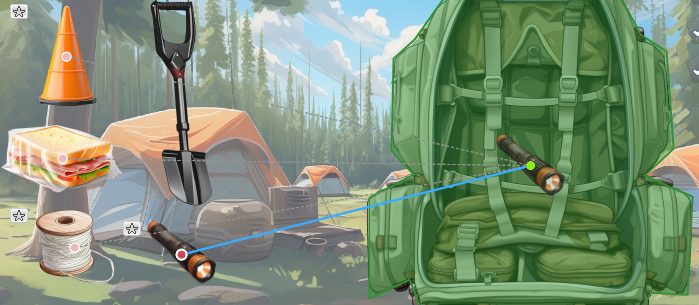Streamlining Drag and Drop Learning
A Practical Solution
Drag and drop interactions are a cornerstone of interactive learning experiences, offering an engaging way for learners to interact with content. However, ensuring that incorrectly placed objects return to their initial positions seamlessly can be a challenge. Traditional methods often involve resetting the entire slide, disrupting the flow of learning and potentially causing frustration for learners by indiscriminately returning the all objects, correctly placed or otherwise.
In my effort to enhance the drag and drop learning experience, I encountered the common dilemma of efficiently handling incorrectly placed objects without disturbing the correctly positioned ones. After some brainstorming, I think I devised a solution that not only addresses this issue but also adds a layer of smoothness to the interaction.
My solution involves using motion path animations and object states to get the job done. Here’s how it works:
Identify the Target Hotspot: Determine the specific hotspot where objects should be dropped and monitored for correctness.
Create Motion Path Animations: For each draggable object, create a motion path animation from its initial position to the center of the target hotspot.
Reverse Motion Path Direction: Reverse the direction of the motion path animation. This causes the motion path to effectively guide the object from the incorrect hotspot back to its initial position seamlessly.
- Trigger the Motion Path Animation: Once an object is dropped on the hotspot, trigger the motion path animation. The object will appear to snap to the hotspot and smoothly return to its starting position.
By integrating this solution into your drag and drop learning interactions, you not only ensure that misplaced objects return to their starting positions effortlessly but also enhance the overall user experience with smooth and intuitive animations.
This approach offers several advantages:
Selective Restoration: Only incorrectly placed objects are returned to their initial positions, preserving the placement of correctly positioned ones.
Seamless Transition: The motion path animation provides a visually pleasing and seamless transition, enhancing the overall user experience.
Efficiency: By avoiding the need to reset the entire slide, the solution improves the efficiency of the interaction and minimizes disruptions to the learning flow.
By combining motion path animations with drag and drop triggers, you can elevate the effectiveness and user experience of drag and drop learning interactions. Why settle for clunky resets when you can achieve smooth transitions with a simple yet powerful approach? Give it a try and let me know how it works for you!


